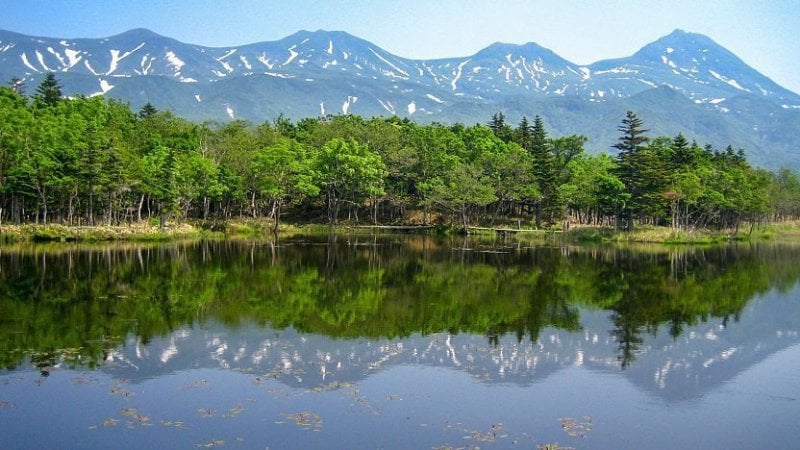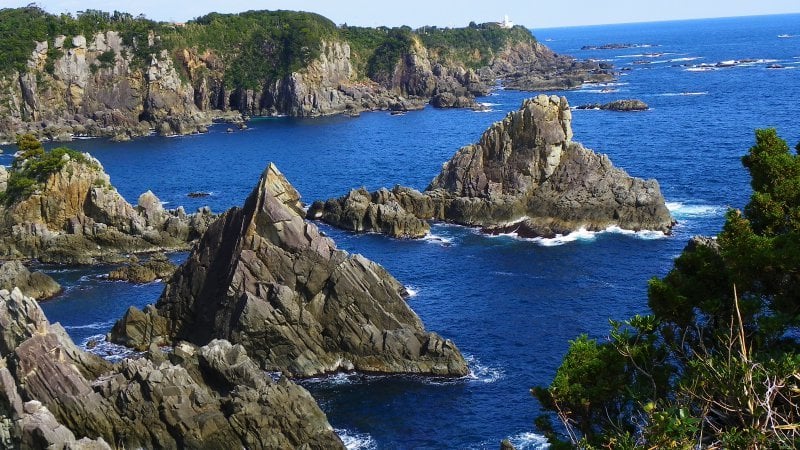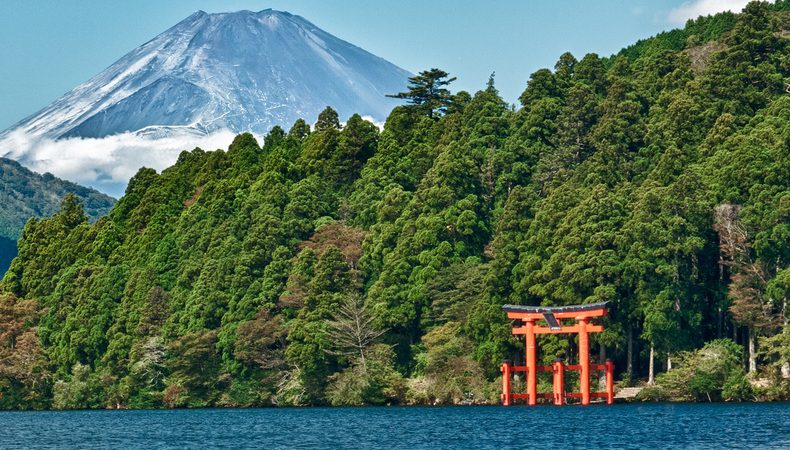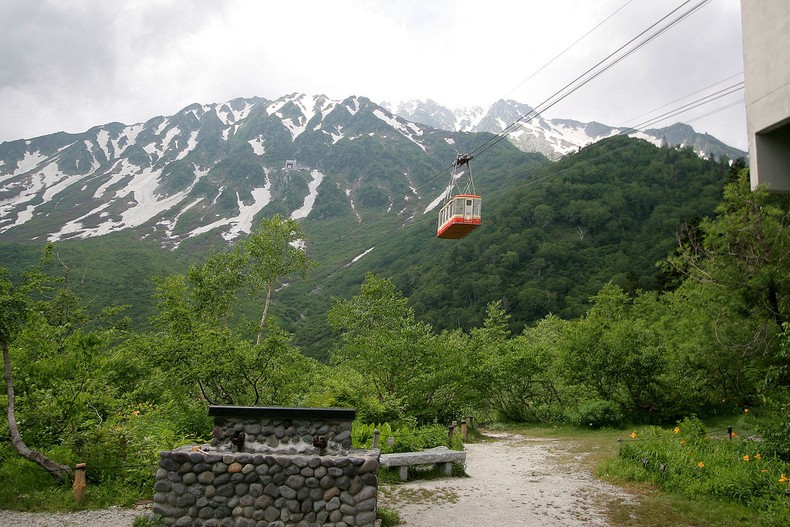Do you know all of Japan's national parks? Japan has an incredible natural tourism, due to the exuberance and preservation of its nature. In this article, we are going to see the best national parks and a complete list of them all.
It is not a park like Asakusa or Ueno, it is literally a forest and an area with many hectares that are reserved by the government that may or may not be open to the public.
Today there are more than 80 national parks, spread throughout the archipelago, which are certainly worth a visit for anyone visiting the country. Here we list the five national parks that you cannot miss in Japan:
Table of Content
What are National Parks in Japan?
The Japanese National Parks are called kokuritsu koen [公園] and the Regular Parks are kokutei koen [定公園]. They are places of scenic beauty designated for protection and sustainable use by the Minister of the Environment under the Natural Parks Law of 1957.
Since 1931, Japan has had legislation to protect the environment and demarcate preserved areas, and in 1934 the first national natural parks were created.
The National Parks of Japan are managed by the Ministry of the Environment, while smaller parks are managed by the prefecture, private or individual institution.
The area of each Parque Nacional and Quase Nacional is divided into common, special, and marine zones. The special zones are subdivided into protection zones that may be restricted from access for preservation purposes.

5 - Kerama Shotō National Park
Kerama National Park is located around the Kerama Islands, which is where the name of the park comes from. This region is characterized by turquoise water and white sand, with the main attractions being water and extreme sports, such as swimming, diving and climbing.
There are 22 islands that make up the Kerama Islands, 4 of which are completely uninhabited. They are located in Okinawa Prefecture, the southernmost prefecture in Japan. The most popular islands to visit are Tokashiki (the largest island), Zamami and Aka.

To access the islands, you must take a ferry from Naha, Okinawa, with an express ferry option. There are hotels and resorts around the park area.
There are many marine animals that can be seen in the park, such as whales, turtles and big fish. The park is certainly a good tip for anyone traveling to Japan in the summer.
4 - Shiretoko National Park
Shiretoko National Park is a spectacle for those who enjoy preserved nature and contact with wildlife. It is located in the north of the Hokkaido region, Japan's most untouched region, on the Shiretoko Peninsula. The park occupies practically the entire area of the peninsula and access to more remote areas is only by boat or on foot, there are no roads in most of the park.
Shireroko is famous for its wildlife and its large population of animals such as brown bears, deer and foxes. In fact, it is the place with the largest population of brown bears in Japan. In summer, tourists can spot them from boat rides on the slopes of the park.

In winter, the coast of the Shiretoko peninsula is the southernmost place in the Northern Hemisphere where drifting ice is found (“loose” pieces of ice in the ocean, which are not trapped on the coast, in rocks or icebergs), which is a show apart. The park has a hot spring, called Kamuiwakka Falls (Kamuiwakka-no-taki). Its name means "waters of the gods".
From Shiretoko Park you can see Kunashiri Island, a territory disputed by Russia and Japan to this day.
The extremely preserved natural beauty and care of the park as a conservation area have earned it the title of a UNESCO World Natural Heritage Site.
3 - Kirishima-Kinkowan National Park
A place of beautiful landscapes, with a unique natural beauty, the Kirishima-Kinkowan National Park has active volcanoes, thermal lakes and even a beautiful coast, in the south of Japan.
Located on the island of Kyushu, the southernmost island of the 4 main ones that make up the country, the park is in the volcanic region of Kagoshima and Miyazaki, which has 3 volcanic belts.
The 3 live volcanoes can be found in Kirishima-Kinkowan, in addition to many others without activity. As well as lakes and hot volcanic waterfalls, famous for their medicinal properties. The region still has a beautiful diversity of vegetation, surprising for a volcanic region.
The highest peak among the volcanoes is 1,700m, where visitors can have a panoramic view of the park and its unique geography, formed by undulations and craters with lakes. This part of the park is an attraction for those who enjoy climbing and hiking.

Another unmissable part of the park is Kinko Bay. The bay was formed by a volcanic eruption over 29,000 years ago and still faces the active Sakurajima volcano today.
The park is very close to Kagoshima Airport, making it easy to access. An unmissable visit to see a landscape so peculiar and unique to Japan.
2 - Yoshino-Kumano National Park
Yoshino-Kumano National Park is located in a non-contiguous area of Mie, Nara and Wakayama prefectures on the Kii Peninsula.

It is one of the oldest national parks in Japan, its creation was in 1936. The park has mountains, valleys and beaches, being a good option for those who want to see nature, history and culture. That's because the park encompasses the Kumano Sanzan, a group of ancient shrines in the Kumano region, and Mount Yoshino, famous for its beauty.
The park's main attraction, however, is its cherry trees, located on Mount Yoshino, considered a natural and sacred world heritage site by UNESCO. The hill is considered one of the best places for the hanami festival, where people go to see the sakura (cherry blossom) bloom, usually in spring, between late March and mid-April, sometimes extending into May.
1 - Fuji Hakone Izu National Park
The Fuji Hakone Izu National Park is the most popular park in Japan, due to its proximity to Tokyo and the famous Monte Fuji.

Bringing together Mount Fuji and its 5 lakes, Hakone, with its ancient history, shrines and hot springs, and the peninsula and the Izu Islands (later incorporated into the park), the park brings a lot of beauty and variety of natural landscapes.
Fuji Hakone Izu National Park represents Japan well, with its volcanic landscape, hot springs, diverse vegetation and island geography, bringing at its heart Mount Fuji, which is not only the highest mountain in Japan, but also the symbol and a source of pride for its people, its visitation is almost mandatory for anyone who goes to the country.
List of National Parks in Japan
The list of national parks in Japan below has the year of their foundation along with their region and hectares:
| japan national park | Year | Region | Acre |
| Akan National Park | 1934 | Hokkaidō | 90,481 hectares (223.58 acres) |
| Minami Alps National Park | 1964 | Chūbu | 35,752 hectares (88.35 acres) |
| Amami Guntō National Park | 2017 | Kyūshū | 42,181 hectares (104.23 acres) |
| Parque Nacional Ashizuri-Uwakai | 1972 | Shikoku | 11,345 hectares (28.03 acres) |
| Aso Kujū National Park | 1934 | Kyūshū | 72,678 hectares (179.59 acres) |
| Bandai-Asahi National Park | 1950 | Tōhoku | 186,389 hectares (460.58 acres) |
| Chichibu Tama Kai National Park | 1950 | Kantō | 126,259 hectares (311.99 acres) |
| Chūbu-Sangaku National Park | 1934 | Chūbu | 174,323 hectares (430.76 acres) |
| Daisen-Oki National Park | 1936 | Chūgoku | 35,353 hectares (87.36 acres) |
| Daisetsuzan National Park | 1934 | Hokkaidō | 226,764 hectares (560.35 acres) |
| Fuji-Hakone-Izu National Park | 1936 | Kantō | 121,695 hectares (300.71 acres) |
| Parque Nacional Hakusan | 1962 | Chūbu | 11,345 hectares (28.03 acres) |
| Iriomote-Ishigaki National Park | 1972 | Kyūshū | 40,653 hectares (100.46 acres) |
| Ise-Shima National Park | 1946 | Kinki | 55,544 hectares (137.25 acres) |
| Joshin'etsu-kōgen National Park | 1949 | Kantō | 148,194 hectares (366,20 acres) |
| Kerama Shotō National Park | 2014 | Kyūshū | 3,520 hectares (8,700 acres) |
| Parque Nacional Kirishima-Kinkowan | 1934 | Kyūshū | 36,586 hectares (90.41 acres) |
| Kushiro-shitsugen National Park | 1987 | Hokkaidō | 28,788 hectares (71.14 acres) |
| Myōkō-Togakushi Renzan National Park | 2015 | Chūbu | 39,772 hectares (98.28 acres) |
| Nikkō National Park | 1934 | Kantō | 114,908 hectares (283.94 acres) |
| Parque Nacional Ogasawara | 1972 | Kantō | 6,629 hectares (16,380 acres) |
| Parque Nacional de Oze | 1972 | Tōhoku | 37,200 hectares (91.92 acres) |
| Rishiri-Rebun-Sarobetsu National Park | 1974 | Hokkaidō | 24,166 hectares (59.72 acres) |
| Parque Nacional de Saikai | 1955 | Kyūshū | 24,646 hectares (60.90 acres) |
| Sanin Kaigan National Park | 1936 | Kinki | 8,783 hectares (21,700 acres) |
| Sanriku Fukkō National Park | 1955 | Tōhoku | 28,537 hectares (70.52 acres) |
| Setonaikai National Park | 1934 | Kinki, Chugoku, Shikoku, Kyushu | 67,242 hectares (166.16 acres) |
| Shikotsu-Tōya National Park | 1949 | Hokkaidō | 99,473 hectares (245.80 acres) |
| Shiretoko National Park | 1964 | Hokkaidō | 38,636 hectares (95.47 acres) |
| Parque Nacional Towada-Hachimantai | 1936 | Tōhoku | 85,534 hectares (211.36 acres) |
| Parque Nacional Unzen-Amakusa | 1934 | Kyūshū | 28,279 hectares (69.88 acres) |
| Parque Nacional de Yakushima | 2012 | Kyūshū | 32,553 hectares (80.44 acres) |
| Yanbaru National Park | 2016 | Kyūshū | 13,622 hectares (33.66 acres) |
| Yoshino-Kumano National Park | 1936 | Kinki | 61,406 hectares (151.74 acres) |

List of Regular Parks in Japan
Kantō
- Suigō-Tsukuba Quasi-National Park
- Minami Bōsō Quasi-National Park
- Meiji no Mori Takao Quasi-National Park
- Tanzawa-Ōyama Quasi-National Park
Kansai
- Suzuka Quasi-National Park
- Wakasa Wan Quasi-National Park
- Tango-Amanohashidate-Ōeyama Quasi-National Park
- Biwako Quasi-National Park
- Murō-Akame-Aoyama Quasi-National Park
- Kongō-Ikoma-Kisen Quasi-National Park
- Yamato-Aogaki Quasi-National Park
- Kōya-Ryūjin Quasi-National Park
- Meiji no Mori Minō Quasi-National Park
- Kyoto Tamba Kogen Quasi-National Park
Chūbu
- Echigo Sanzan-Tadami Quasi-National Park
- Myōgi-Arafune-Saku Kōgen Quasi-National Park
- Sado-Yahiko-Yoneyama Quasi-National Park
- Noto Hantō Quasi-National Park
- Echizen-Kaga Kaigan Quasi-National Park
- Yatsugatake-Chūshin Kōgen Quasi-National Park
- Tenryū-Okumikawa Quasi-National Park
- Ibi-Sekigahara-Yōrō Quasi-National Park
- Hida-Kisogawa Quasi-National Park
- Aichi Kōgen Quasi-National Park
- Mikawa Wan Quasi-National Park
Hokkaidō
- Abashiri Quasi-National Park
- Hidaka-sanmyaku Erimo Quasi-National Park
- Niseko-Shakotan-Otaru Kaigan Quasi-National Park
- Ōnuma Quasi-National Park
- Shokanbetsu-Teuri-Yagishiri Quasi-National Park
Tōhoku
- Shimokita Hantō Quasi-National Park
- Tsugaru Quasi-National Park
- Hayachine Quasi-National Park
- Kurikoma Quasi-National Park
- Minami-Sanriku Kinkazan Quasi-National Park
- Zaō Quasi-National Park
- Oga Quasi-National Park
- Chōkai Quasi-National Park
Chugoku and Shikoku
- Hyōnosen-Ushiroyama-Nagisan Quasi-National Park
- Hiba-Dōgo-Taishaku Quasi-National Park
- Nishi-Chūgoku Sanchi Quasi-National Park
- Kita Nagato Kaigan Quasi-National Park
- Akiyoshidai Quasi-National Park
- Tsurugisan Quasi-National Park
- Muroto-Anan Kaigan Quasi-National Park
- Ishizuchi Quasi-National Park
Kyūshū
- Kitakyūshū Quasi-National Park
- Genkai Quasi-National Park
- Yaba-Hita-Hikosan Quasi-National Park
- Iki-Tsushima Quasi-National Park
- Kyūshū Chūō Sanchi Quasi-National Park
- Nippō Kaigan Quasi-National Park
- Sobo Katamuki Quasi-National Park
- Nichinan Kaigan Quasi-National Park
- Okinawa Kaigan Quasi-National Park
- Okinawa Senseki Quasi-National Park
